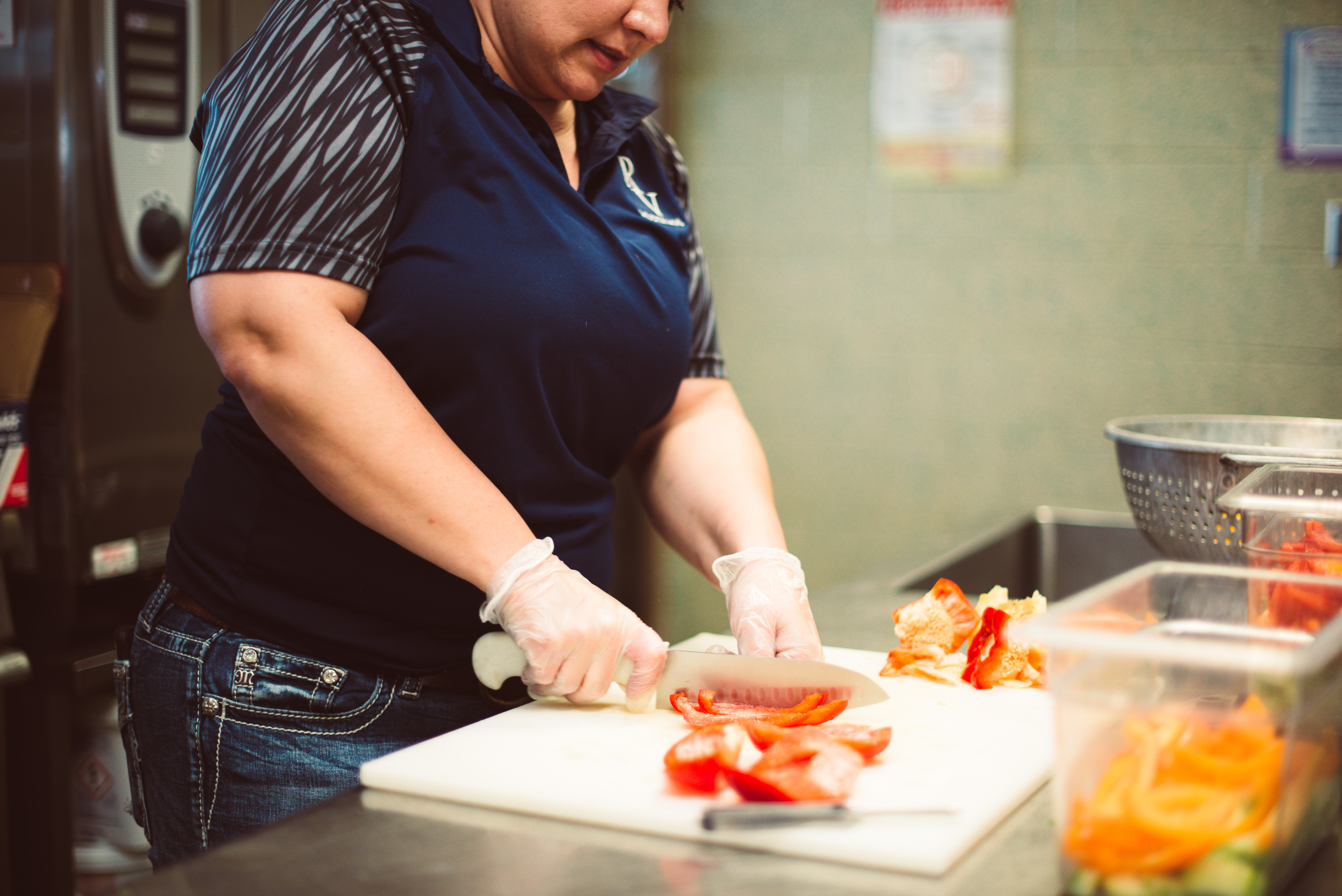Lunch Lady
One cannot think well, love well, sleep well, if one has not dined well.” —Virginia Woolf
With dreams of a career in architectural engineering, Jenny Jones would reach a fork in the road that would lead her down the hallway to a school cafeteria—where there were even more forks—and lots of hungry students.
Jones is Food Services Director for the River Valley School District in Three Oaks, Michigan. The largely rural district covers over 100 square miles, including several small towns and villages, high-end summer lakefront homes and thousands of acres of farmland. On a typical school day, Jones and her staff serve 350–400 breakfasts and 250–300 lunches to students in preschool through 12th grade.
Challenges and solutions
Jones took the helm at River Valley in fall 2012, during the awkward years of transitioning to healthier meals for school children, in accordance with new federal guidelines (2010’s Healthy, Hunger-Free Kids Act). Menus needed more fruits and vegetables, less sodium and unhealthy fat.
Jones says the ideas were good, but there were too many changes at once.
“Kids were used to 10 chicken nuggets and started receiving only five. They were hungry, but they didn’t want to eat the vegetables and fruit that was there. As the food service person, you were seen as the villain.” Students would complain to the cooks and yell at them, send pictures of the food to their parents or post them on social media. Jones would follow up on each one.
Jones feels fortunate to have a qualified and knowledgeable staff of five. Through recipe adjustments, patience and a more open dialogue with students, changes became accepted and even preferred. She explains, “I’ve had parents say, ‘My kids are eating things at school that I would never touch. And I now buy hummus! I don’t eat it, but my kids do!’”
Other students tell their parents that they don’t like the pale iceberg lettuce anymore but prefer the school’s “green stuff.” And brown rolls instead of white bread, if you please.
Another challenge is food allergies. Nut allergies scare her the most. “If a child has a severe allergy, I need to meet with the parents, and I need to talk to the child. I don’t care what grade they are in. I ask them what their five favorite meals are, and what they like and don’t like, because I’m not going to waste my time and their money if they can’t eat it. It drives me nuts when food gets thrown away.”
The sourcing issues that frustrated food shopping for the everyday consumer also were a challenge for school cooks. “Last year we had a hard time sourcing tortillas, so we switched to rice bowls,” Jones says. A lunchroom conversation ensued, with a student saying, “Hey, it’s good, but it’s missing something, like a sauce.” The cooks started serving it with green salsa, and also made an avocado yogurt sauce to go alongside. A happy meal was born.
The kitchen prioritizes local products when sourcing food and welcomes opportunities to use produce directly from farms. “Sometimes we can get local potatoes, or an extra 10 pounds of blueberries. Students love leftover apples that may be smaller than the regular market large ones,” Jones says.
A lifetime in food
Jones grew up in St. Joseph, Michigan, working various jobs in fast food restaurants throughout high school, in addition to the midnight shift at a doughnut bakery. She became a meat cutter at a local butcher shop, attaining national certification. When time allowed, she worked at the vegetable farm of her father’s family.
“For a girl who grew up in the city, I knew all about the proper way to put manure on the ground,” she says.
Studying engineering in college lost its glow when Jones realized she could never make friends with all the math. Taking some time away from the books, she moved to Chicago and enrolled in the Cooking & Hospitality Institute of Chicago, graduating in 2009. While in culinary school, she gained a wide range of experience in short-term internships at restaurants around Chicago. Her formal internship was in the food service department at Moody Bible Institute, where she secured a full-time position following graduation.
As she watches more and more students progress through their school years, it gets harder to see them graduate. “To see them grow and mature, with their food preferences, even if they never end up liking something. Just building a relationship with the kids is great. And teaching them about what you do, and inviting them into the kitchen, because so many kids NEVER learn how to cook.”
Jones’ engineering bug still surfaces on occasion, with kitchen equipment repairs and retooling, and in her off hours she coaches the high school’s robotics team.
Deborah Rieth writes from a Michigan small farm, where her soul is nourished by gardens, kitchens and words.








